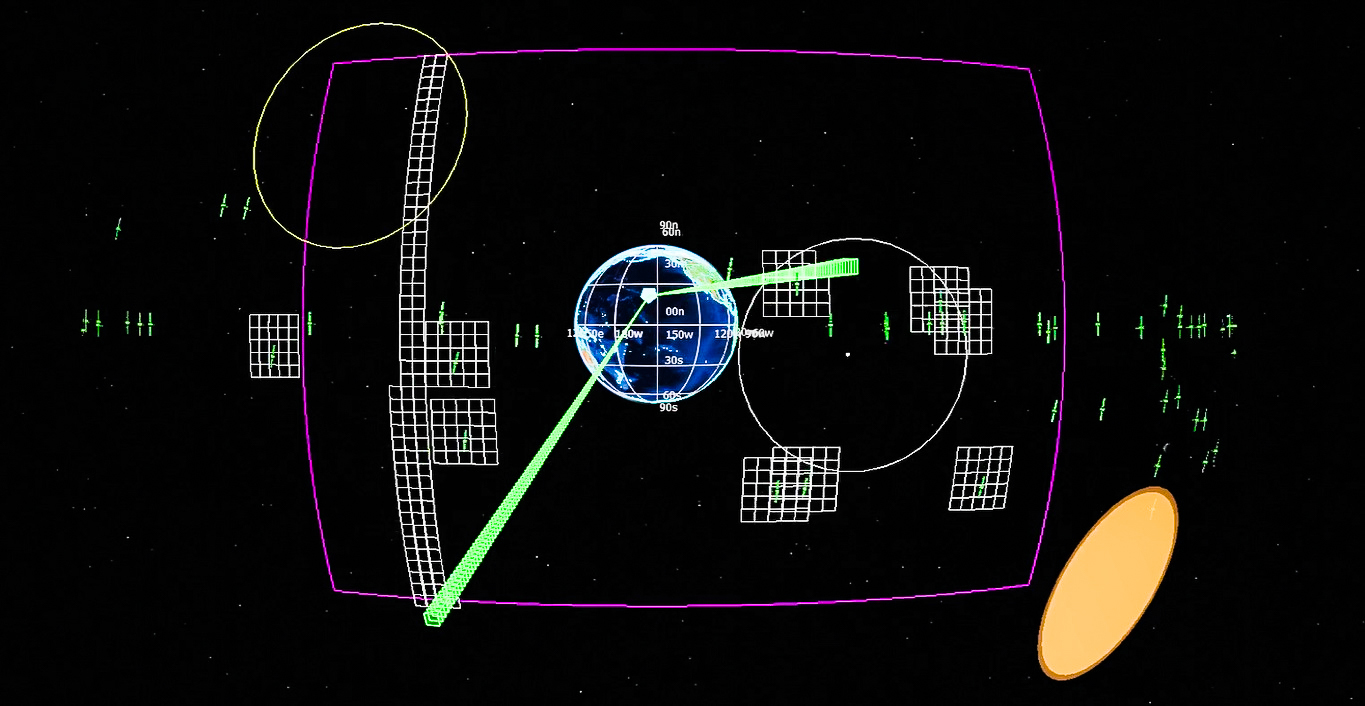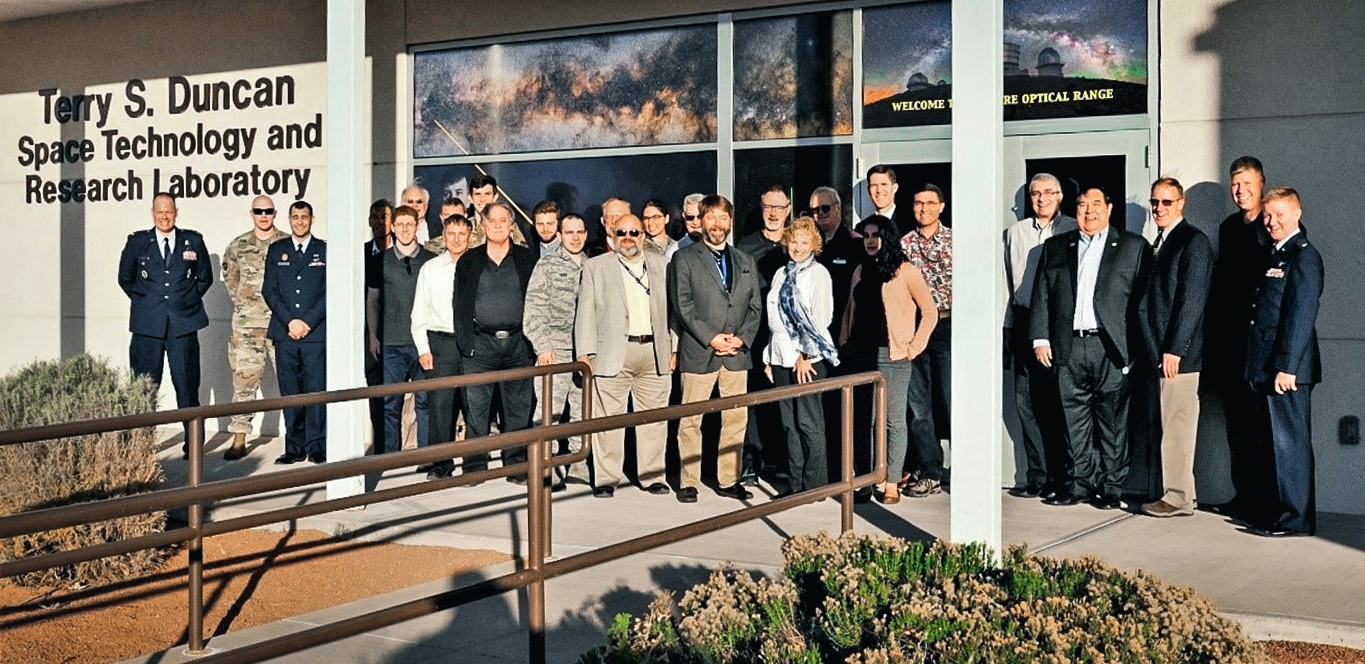AFRL’s Satellite Assessment Center celebrates 30 years of service to Nation
KIRTLAND AIR FORCE BASE, N.M. — “Access to space is essential to U.S. prosperity and security — it is a national imperative,” states the United States Space Force (USSF) recently released “Space Capstone Publication, Spacepower Doctrine for Space Forces.”
On Aug. 17, the Air Force Research Laboratory’s (AFRL’s) Satellite Assessment Center (SatAC) celebrated its 30-year anniversary. Through its skilled workforce and leading edge software and modeling programs, the men and women of SatAC are helping to ensure that imperative is kept.
In 1987, President Ronald Reagan signed the National Security Decision Directive Number 258 that formally established SatAC, a chartered organization to evaluate directed energy (DE) effects on space systems, perform assessments of space system vulnerabilities to DE and natural environments, and develop tools to perform space systems technical analyses.
The Air Force activated the Satellite Assessment Center in 1990 at AFRL’s predecessor unit, the Air Force Weapons Laboratory located on Kirtland Air Force Base, N.M.
Today, SatAC resides in the AFRL Directed Energy Directorate’s Space Electro-Optics Division, and is the Department of the Air Force’s “Center of Excellence” for radiometrically accurate resident space object modeling, simulation, and analysis technologies.
“The Satellite Assessment Center is one of the space community’s essential agencies, relied upon to answer some of the most challenging technological issues facing our on-orbit assets,” said Dr. Kelly Hammett, the director of AFRL’s Directed Energy Directorate. “It is my pleasure to recognize SatAC’s 30-year storied history in meeting our country’s space superiority mission. I am proud to lead such a dedicated team of professionals and pay honor to the many SatAC team members who proceeded them.”
Several scientists and engineers who held SatAC positions in the past, continue to work at the laboratory in support of the nation’s space mission. Long-time AFRL engineer Quentin Dierks looks back at the organization.
“The SatAC organization was born out of the Strategic Defense Initiative era, and was dedicated to pioneering and conducting unique analysis for space systems in support of critical programs across the Department of Defense (DoD) in the Space Domain Awareness and Space Superiority mission areas,” said Dierks, the Space Electro-Optics division’s chief engineer.
Dierks joined the SatAC team in 1993, ended his time with the program as branch chief in 2006, and was recently promoted to chief engineer of the AFRL Space Vehicles Directorate.
“It was very exciting to figure out how to solve new problems, build the tools, and conduct the analysis tasks in support of important DoD programs,” Dierks said. “Though technology has changed significantly since the early ‘90s the need for SatAC and the mission they perform has not, and if anything, the situation is more challenging and more important than ever before.”
During its 30-year history, the SatAC has experienced many successes because of the expertise and dedication of scores of laboratory researchers and technicians.
In 1995, in an historic endeavor, SatAC demonstrated optical software capabilities of more than 100 basic, and 10 high-fidelity satellite computer-aided designs (CADs). These software tools and CAD models allowed the U.S. Space Command Combined Intelligence Center’s space analysts to access previously unavailable optical space surveillance data, increasing the nation’s space domain awareness.
In the tragic 2003 space program event that rocked the nation, SatAC models were used in conjunction with imagery taken at AFRL’s Starfire Optical Range on Kirtland, to assist NASA engineers in the analysis of the space shuttle Columbia’s breakup during re-entry.
“On Mar. 23, 2020, the Secretary of the Air Force identified AFRL’s Space Electro-Optics Division as one of 23 units performing critical U.S. Space Force missions,” said Col. Peter Norton, the Space Electro-Optics division chief. “Within our division, the SatAC team is core to meeting warfighter needs. And with the establishment of our U.S. Space Force, the criticality of the Space Domain mission has been elevated.”
“Our warfighters require Space Domain Awareness that is predictive of future operational environments,” Norton said. “These 21st century USSF Space Domain Awareness requirements not only require advanced sensors, but also advanced data management and assessment techniques. SatAC’s satellite characterization role will become increasingly important as the Space Domain becomes precipitously more congested and contested.”
As the Department of the Air Force advances the country’s space superiority mission and space warfighting doctrine, AFRL’s Satellite Assessment Center will continue to help secure the nation’s ability to operate freely in space as it enters its 31st year and beyond.

Air Force Research Laboratory Satellite Assessment Center’s modeling and simulation tool called STARSIM simulates networks or ground based telescopes performing space domain awareness (SDA) missions. Depicted above is STARSIM simulating the Dynamic Optical Telescope System at AFRL’s Maui site, performing SDA missions such as custody searches, orbit determination, and clearing searches on satellites in geosynchronous orbit.

Air Force Research Laboratory scientists Robert Johnson and Rick Cleis of AFRL’s Starfire Optical Range captured the last, resolved images of the space shuttle Columbia before it was destroyed upon reentry. AFRL’s Satellite Assessment Center overlaid wire-frame models on the images, becoming part of the official accident report.

The Air Force Research Laboratory Satellite Assessment Center (SatAC) team gathered for a reunion in Oct. 2019, at AFRL’s Starfire Optical Range located on Kirtland Air Force Base, New Mexico. Those in attendance ranged from members who served in the early 1990s to those supporting SatAC today.
